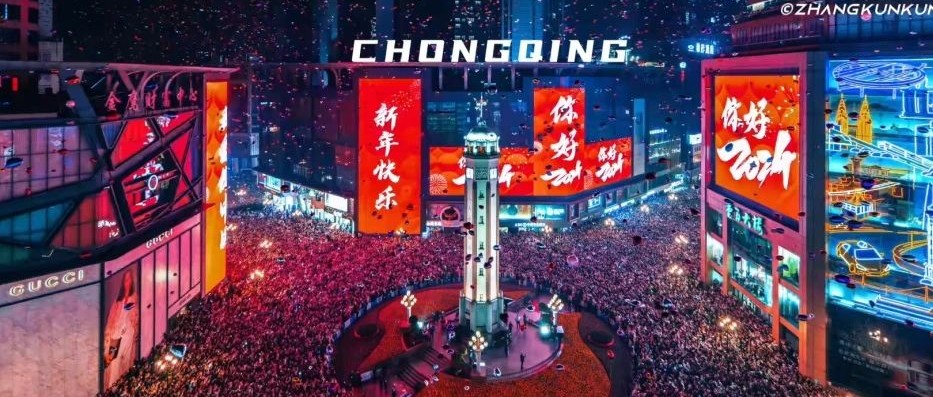- 0
- 0
- 0
分享
- 广告在元宇宙中如何运作?户外的下一关
-
原创 2022-07-26

元宇宙在过去的一年里已经成为一个无法绕开的热词,特别是自从Facebook重新命名为Meta开始。然而,还远不止如此,因为我们正在见证一种全新广告媒介的生发,它可能会在未来十年对各个行业的营销策略产生深远的影响。
不要搞错:由于被迫适应在线工作、学习和社交,新冠疫情加速了元宇宙业已存在的增长。这个概念并不新鲜,元宇宙不仅仅是一个由新冠引发的热词。
这反过来又带来了一个不可避免的问题。你是否应该将元宇宙的广告作为全渠道营销计划的一部分? 处于这种媒介中的广告是如何与户外形式关联的? 在本指南中,我们将了解什么是元宇宙,它是如何运作的,它对广告的影响,以及户外媒体计划能够 (以及需要) 如何发挥更大的作用。

元宇宙是什么?
理解元宇宙以及它将如何在广告业中发挥作用是有些令人费解的,主要是因为它尚不存在。我们有了所有需要的部件,但它们还没有被拼凑起来。Facebook、英伟达(NVIDIA)和微软(Microsoft)等大型科技公司正在竞相成为第一个起支配作用的元宇宙。当你在谷歌搜索元宇宙时,会发现围绕相同观点的多个定义。一个集合的虚拟共享空间,由虚拟增强的物理现实与持续存在的虚拟空间所创建。
简单地说,元宇宙是物质世界的数字孪生。最重要的是,元宇宙不是一个特定品牌的平台。相反,正如《连线》杂志解释的那样,它是一个基于几种技术的更广泛的概念:
“这个词并不是指任何一种特定类型的技术,而是指我们与技术互动方式的普遍的转变……它也可以转化为数字经济,用户可以创造、购买和销售商品。而且,在元宇宙更理想化的愿景中,它是可以互操作的,你可以将衣服或汽车等虚拟物品从一个平台带到另一个平台。”
构成这一环境的技术主要集中于虚拟现实和增强现实,它们结合了物理世界和数字世界的各个方面。元宇宙不像虚拟现实(VR)和增强现实(AR)那样,在过去几年里,虚拟现实(VR)和增强现实(AR)慢慢成为我们生活的一部分。相反,它是一个复制了现实世界的虚拟世界,无论个人用户是否在其中,它都持续存在。
元宇宙如何运作在经济方面对我们的社会也是很有吸引力的。未来,完整版本的元宇宙将会创建一个完整的生态系统,独立于游戏等单个平台。因此,用户将能够购买虚拟物品,并在元宇宙内的不同平台上转让它们。
换句话说,元宇宙的目标是在虚拟环境中尽可能多地再现现实生活中的各个部分及其复杂性,消除从社交互动到工作和日常生活的物理障碍。
综上所述,元宇宙是:
·就像我们自己的宇宙,里面有多个世界
·一个虚拟世界,不管你是否在其中都在持续运行
·一个购买和销售虚拟商品的环境
·一个社交、工作和玩游戏的环境

在今天的环境中触达受众的挑战
对元宇宙如何在广告领域运作的共识开始进入市场营销领域。营销人员认为自己正处于一个关键的十字路口。今天的品牌面临着一个挑战,新一代消费者比他们之前任何年龄段的人都有更高的期望,你怎样才能触达新一代消费者并建立与他们的关系?
单靠数字广告已经不够了。再加上广告拦截软件,持续缩短的注意力为我们设置了一个标准,即成功的广告必须同时具有吸引力、有意义以及有沉浸感。
此外,“现实生活中的广告”将变得更加重要。走在现代化前沿的品牌已经将消费者体验转变为供消费者互动、购买和分享产品的游戏。例如,耐克的Reactland是一种沉浸式的体验,旨在推广新的React Flyknit跑鞋。通过一款互动视频游戏,购物者可以创建自己的虚拟形象,然后在现实生活中在跑步机上慢跑的同时,穿行于游戏中的森林和屋顶。
随着元宇宙的逐渐崛起,虚拟游戏化设计这种类型在未来将表现出更大的意义。换句话说,通过以非侵入性的方式将沉浸式体验与现实生活中的互动联系起来,营销人员可以更有效地触达和吸引他们的受众。
元宇宙中的程序化广告购买
首先:广告在元宇宙中不会消失,无论是当前的状态还是未来的预测。在今天的战略性媒体购买背后,同样的程序化思路在新的数字环境中仍然适用。虚拟不动产可以被视为数字广告库存,通过其它方式基于消费者数据的定位已经实现。那么程序化广告在元宇宙中是如何起作用的呢?
在最基本的层面上,元宇宙将使现实世界同样的广告可以在虚拟世界的同样位置被看到,提升品牌回忆。例如,想象你的品牌在现实生活中占据了一个有名的十字路口的广告牌空间,只是为了让你的客户在进入元宇宙的这个位置时遇到同样的(或者可能是相同的一个更具互动性的版本)广告牌。
然而,这仅仅是个开始。元宇宙的虚拟本质揭示了新的可能性,尤其是在户外的场景下,是不可能忽视的。IBM Watson广告公司的首席产品官David Olesnevich告诉The Drum,“基于元宇宙的体验和元宇宙平台能提供的扩展数据信号所得的新定位能力,程序化广告有机会成为主要的交易方法。想想这些可能性就已令人兴奋了。”

这就是之前的户外专业技能和体验将变得至关重要的地方。元宇宙能够将永远在线、不可跳过、非侵入性的如此标准的户外广告与先进的定位潜力结合起来,即便是当前的数字广告也无法复制。
用元宇宙思维构建全渠道营销活动
基于我们今天所处的境况,元宇宙仍然是一个流行词。在践行这些实践之前,我们需要一个起支配作用的元宇宙以及元宇宙运作的大规模采用。然而,我们可以预期,在未来10年内元宇宙将快速增长,向主导的元宇宙靠拢,最终成为任何品牌能够有效触达其受众的重要渠道。
年轻玩家已经对这个概念很熟悉了,部分原因是像“堡垒之夜”和“Roblox”这样的电游带有一些元宇宙的特征。随着Z世代逐渐成长为一个拥有巨大消费能力的消费群体,元宇宙的广告最终将成为跨行业全渠道营销计划的重要组成部分。
新冠疫情使得用于游戏、工作和社交的虚拟环境成为我们生活中一个应有的标准。结果是,消费者不想退回到破坏沉浸式的广告,这会分散他们对当前任务的注意力。随着户外媒体和现实生活中的广告进入元宇宙,他们将发现准备好并愿意参与其中的受众。
换句话说,总之我们正在迅速走向新一代的户外和广告。你们有什么计划来准备迎接这个全新的数字化、沉浸式时代?跟我们谈谈你的“户外媒体”计划吧。

The Metaverse has become an inescapable buzzword over the past year, especially since Facebook rebranded into Meta. However, it’s much more than that, as we’re witnessing the beginnings of an entirely new medium of advertising that could have far-reaching influences on marketing strategies across industries over the next decade.
Make no mistake: The COVID-19 pandemic has accelerated an already-existing growth of the Metaverse due to the forced adjustment to online working, learning, and socializing. The concept is nothing new, and it’s more than just a COVID-induced buzzword.
That, in turn, brings up an inevitable question. Should you consider Metaverse advertising as part of an omnichannel marketing plan? How does advertising in this medium relate to out of home methods? In this guide, we’ll look at what the Metaverse is, how it works, its impact on advertising, and how OOH media plans can (and need to) play into the larger equation.
What is the Metaverse?
Understanding the Metaverse and how it will work in advertising is confusing, mainly because it does not exist yet. We have all the pieces we need, but they’re not put together yet. Big tech companies like Facebook (Meta), NVIDIA, and Microsoft are racing to become the first central Metaverse. When you do a Google search for the Metaverse, you will find multiple definitions around the same idea. A collective virtual shared space created by a virtually enhanced physical reality with a persistent virtual space.
In simpler terms, the Metaverse is a digital twin of the physical world. Most importantly, the Metaverse is not a brand-specific platform. Instead, as explained by Wired Magazine, it’s a broader concept based on several technologies:
“The term doesn’t really refer to any one specific type of technology, but rather a broad shift in how we interact with technology… It also translates to a digital economy, where users can create, buy, and sell goods. And, in the more idealistic visions of the Metaverse, it’s interoperable, allowing you to take virtual items like clothes or cars from one platform to another.”
The technologies that make up this environment focus on virtual reality and augmented reality, which combine aspects of the physical and digital worlds. The Metaverse is not like Virtual Reality (VR) and Augmented Reality (AR) which have slowly become a part of our lives over the past few years. Instead, it is a virtual world that replicates the real world, continuing to exist regardless of whether an individual user is in it or not.
The economic aspect of how the Metaverse will work is also interesting for our society. In the future, a complete version of the Metaverse will create an entire ecosystem, independent of individual platforms like games. As a result, users will be able to purchase virtual items and transfer them across different platforms within the Metaverse.
In other words, the Metaverse aims to recreate as many parts of real life and all its complexities as possible in a virtual environment, removing physical barriers for anything from social interaction to work and day-to-day activities.
In summary, the Metaverse is:
•Just like our own universe, with multiple worlds housed inside of it
•A virtual world that continues to operate regardless of if you are in it or not
•An environment to buy and sell virtual goods
•An environment to socialize, work, and play games

The Challenges of Reaching Your Audience in Today’s Environment
An understanding of how the Metaverse works in advertising is beginning to enter the marketing landscape. Marketers consider themselves at a critical crossroads. Today’s brands are faced with a challenge, how can you reach and build a relationship with a new generation of consumers that expects more than any age group preceding them?
Digital ads alone are no longer sufficient. In conjunction with Adblocking software, shrinking attention spans sets the standard that successful ads must simultaneously be engaging, meaningful, and immersive.
Additionally, “advertising in real life” will become even more significant. Already, brands at the forefront of modernization are transforming consumer experiences into games for consumers to interact, buy, and share the products. For example, Nike’s Reactland was an immersive experience designed to promote the new React Flyknit running shoe. Through an interactive video game, shoppers could create avatars of themselves and then navigate through the game’s forests and rooftops while jogging on a treadmill in real life.
With the gradual rise of the Metaverse, this type of virtual gamification is aimed to take on an even greater significance in the future. In other words, by connecting immersive experiences with real-life interactions in a non-intrusive way, marketers can more effectively reach and engage their audience.
Programmatic Ad Buying
in the Metaverse
First things first: ads are not going away in the Metaverse, in its current state and future projections. The same programmatic ideas behind today’s strategic media buying will still be just as relevant in the new digital environment. Virtual real estate can be treated as digital ad inventory, with consumer data-based targeting already in place through other means. So how does programmatic advertising work in the Metaverse?
On the most basic level, the Metaverse will enable the same real-world ads to be seen in the exact location in the virtual world, boosting brand recall. For example, imagine your brand occupying a billboard space at a famous intersection in real life, only for your customers to encounter the same (or perhaps a more interactive version of the same) billboard when they visit the location in the Metaverse.
However, that is only the beginning. The virtual nature of the Metaverse uncovers new possibilities that, especially in the context of OOH, are impossible to ignore. As David Olesnevich, chief product officer at IBM Watson Advertising, told The Drum,“Programmatic advertising has the opportunity to become the predominant method of transacting with new targeting capabilities based on Metaverse experiences and the expanded data signals the Metaverse platforms will provide… It’s exciting to think about the possibilities.”
This is where prior OOH expertise and experience will become crucial. The Metaverse will be able to combine the always-on, unskippable, non-intrusive ads so standard in out of home ads with advanced targeting possibilities that even current digital ads cannot replicate.

Building an Omnichannel Marketing Campaign With the Metaverse in Mind
Based on where we are today, the Metaverse is still a buzzword. We will need a central Metaverse and mass adoption of how the Metaverse works before implementing these practices. However, we can expect rapid growth within the next ten years, moving closer to a central Metaverse that will eventually become a significant outlet for any brand to reach its audience effectively.
Younger audiences are already familiar with the concept, partly due to video games like Fortnite and Roblox that have taken on some characteristics of the Metaverse. As Gen Z ages into a consumer group with significant spending power, Metaverse advertising will eventually become a substantial part of omnichannel marketing plans across industries.
The COVID-19 pandemic has made virtual environments for gaming, work, and socializing a standard in our lives. As a result, consumers do not want to take a step back into immersion-breaking ads that distract them from their current tasks. As OOH and real-life ads move into the Metaverse, they will find an audience ready and willing to engage.
In other words, we’re rapidly moving toward a new generation of OOH and advertising in general. What are your plans to prepare for this new, digital, immersive era? Talk to us about your Out of Home Media plans.


-
阅读原文
* 文章为作者独立观点,不代表数艺网立场转载须知
- 本文内容由数艺网收录采集自微信公众号AOM亚洲户外 ,并经数艺网进行了排版优化。转载此文章请在文章开头和结尾标注“作者”、“来源:数艺网” 并附上本页链接: 如您不希望被数艺网所收录,感觉到侵犯到了您的权益,请及时告知数艺网,我们表示诚挚的歉意,并及时处理或删除。














